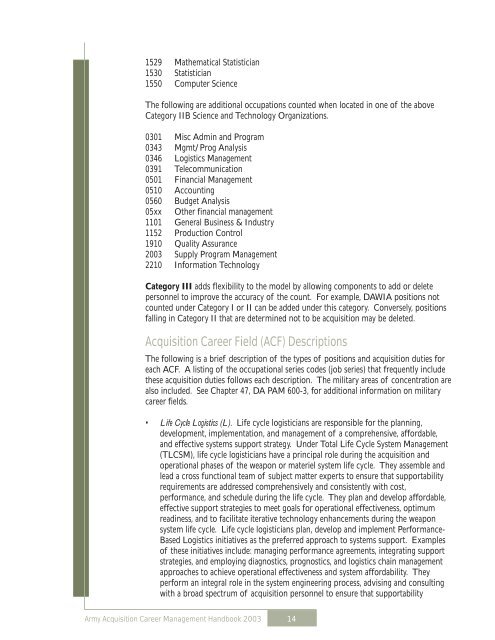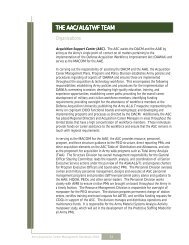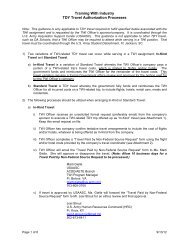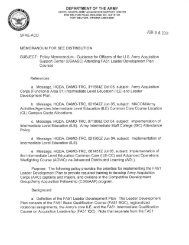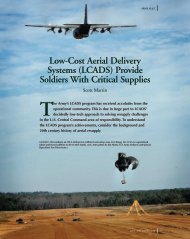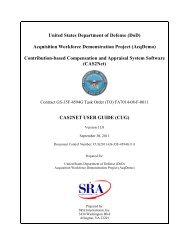Career Management Handbook - U.S. Army
Career Management Handbook - U.S. Army
Career Management Handbook - U.S. Army
Create successful ePaper yourself
Turn your PDF publications into a flip-book with our unique Google optimized e-Paper software.
1529 Mathematical Statistician<br />
1530 Statistician<br />
1550 Computer Science<br />
The following are additional occupations counted when located in one of the above<br />
Category IIB Science and Technology Organizations.<br />
0301 Misc Admin and Program<br />
0343 Mgmt/Prog Analysis<br />
0346 Logistics <strong>Management</strong><br />
0391 Telecommunication<br />
0501 Financial <strong>Management</strong><br />
0510 Accounting<br />
0560 Budget Analysis<br />
05xx Other financial management<br />
1101 General Business & Industry<br />
1152 Production Control<br />
1910 Quality Assurance<br />
2003 Supply Program <strong>Management</strong><br />
2210 Information Technology<br />
Category III adds flexibility to the model by allowing components to add or delete<br />
personnel to improve the accuracy of the count. For example, DAWIA positions not<br />
counted under Category I or II can be added under this category. Conversely, positions<br />
falling in Category II that are determined not to be acquisition may be deleted.<br />
Acquisition <strong>Career</strong> Field (ACF) Descriptions<br />
The following is a brief description of the types of positions and acquisition duties for<br />
each ACF. A listing of the occupational series codes (job series) that frequently include<br />
these acquisition duties follows each description. The military areas of concentration are<br />
also included. See Chapter 47, DA PAM 600-3, for additional information on military<br />
career fields.<br />
• Life Cycle Logistics (L). Life cycle logisticians are responsible for the planning,<br />
development, implementation, and management of a comprehensive, affordable,<br />
and effective systems support strategy. Under Total Life Cycle System <strong>Management</strong><br />
(TLCSM), life cycle logisticians have a principal role during the acquisition and<br />
operational phases of the weapon or materiel system life cycle. They assemble and<br />
lead a cross functional team of subject matter experts to ensure that supportability<br />
requirements are addressed comprehensively and consistently with cost,<br />
performance, and schedule during the life cycle. They plan and develop affordable,<br />
effective support strategies to meet goals for operational effectiveness, optimum<br />
readiness, and to facilitate iterative technology enhancements during the weapon<br />
system life cycle. Life cycle logisticians plan, develop and implement Performance-<br />
Based Logistics initiatives as the preferred approach to systems support. Examples<br />
of these initiatives include: managing performance agreements, integrating support<br />
strategies, and employing diagnostics, prognostics, and logistics chain management<br />
approaches to achieve operational effectiveness and system affordability. They<br />
perform an integral role in the system engineering process, advising and consulting<br />
with a broad spectrum of acquisition personnel to ensure that supportability<br />
<strong>Army</strong> Acquisition <strong>Career</strong> <strong>Management</strong> <strong>Handbook</strong> 2003<br />
14


